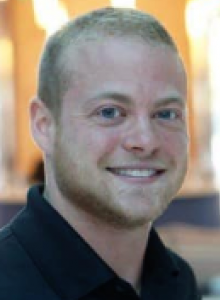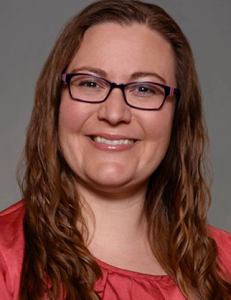Transgender people often know by kindergarten that their bodies and gender identities do not line up, a health care expert said during a virtual panel discussion about trans health and emotional development.
And contrary to the claims of conservative politicians and religious leaders, that awareness comes from within and not from whims influenced by so-called LGBTQ “messaging” in schools or society, Oklahoma City physician Laura Arrowsmith said.

Laura Arrowsmith
“It is not a choice. It is not a mental illness. This is the way we were born. This is congenital,” said Arrowsmith, who is transgender. “We do know as early as 4 years old. I knew and I’ve never varied from that thought. I’ve always known I was supposed to be a woman. But I lived in a time where society said, ‘Nope, you gotta live this way. You have those body parts, so you gotta live this way.’”
Dispelling myths around transgender identity was a key focus of “Understanding Transgender Health Care and Wellness,” which featured Oklahoma-based medical, psychiatric and behavioral professionals who work with trans youth and their families.
Oklahomans were invited to the May 21 discussion because of the surge of anti-LBGTQ legislation in the state this year, said organizer and moderator Lucas Hall, a transman and activist.
“The things that are going on in Oklahoma and many of your states are just very troubling,” Hall said. “And the more we can all know to better support our trans loved ones and community, the better.”

Lucas Hall
Arrowsmith described difficult interpersonal and professional challenges resulting from coming out and transitioning as an adult with children. But the hardships had begun as a child when she intuitively understood she had been born a boy instead of the girl she was.
“I pretty quickly figured out this is something I should not talk about because I got ridiculed,” she said. “I got called names. I got beat up. But I realized in kindergarten that I didn’t want to do what the boys were doing. I wanted to be doing what the girls were doing.”
The psychological consequences were severe, Arrowsmith explained. “I felt severe depression, shame, guilt. I attempted suicide. I didn’t ever resort to substance abuse, but I dealt with depression that lasted up until I was finally able to transition.”
“Sexual orientation is about who you want to sleep with. Gender identity is who you want to sleep as.”
It’s important that parents of trans youth and those who treat trans kids understand that being transgender is not related to sexual preference, she added. “Sexual orientation is about who you want to sleep with. Gender identity is who you want to sleep as.”
While research is ongoing into what makes a person experience gender dysphoria, Arrowsmith said there is emerging evidence from MRI scans that some people are born with brains that do not match their sexual organs. “‘Transition’ is a term we use to describe this whole process that we use to finally make everything finally fit — to make our body match our soul.”

Kelly Kemp
Kelly Kemp, a certified child life specialist at St. Francis Children’s Hospital in Tulsa, explained how early childhood development measures apply to children who are transgender. But she also detailed how she initially processed her own child’s coming out through the lens of conservative evangelicalism.
“I wasn’t always an affirming mom,” she said. “My husband and I raised our kids in a purity-culture home. … And I think I remember telling him, you know, ‘My job is to love you, but I don’t have to accept this,’ which that went over like a lead balloon.”
Her child attempted suicide twice in a conversion therapy home, which began a lengthy journey of education and acceptance for Kemp.
“I had to, as a parent, go through the grieving process, not only of the loss of what I thought my kids were going to be, but of my hopes and dreams for my kids,” she said. “I had to let that go and I had to grieve the loss of my (church) community we had. But what we have now is so, so much better.”
Kemp said she had ignored the very childhood development processes she has used for years to help other children professionally. That included the importance of promoting child autonomy over shame and doubt.
“So, think about something as easy as pronouns, right? Allowing a child to freely use those pronouns is going to help them develop that sense of control and autonomy in their own world. If they’re overly criticized, overly controlled or not given the opportunity to assert themselves, they melt. They may feel inadequate in their ability to survive. They may lack self-esteem and feel a sense of shame or doubt over their own abilities.”
Encouraging trans children to develop their own initiative is another guard against guilt, Kemp said. “Think about allowing a child to freely wear the clothes that they’re choosing. Not only are you helping gain that autonomy, but also initiative. And then they feel free to play the way they want to play.”
Pressuring a young trans person to suppress gender identity leads to role confusion, mental illness and suicidal ideation, she said. “Think about our kids who are not allowed to use the correct bathroom — the bathroom that they identify with — use their pronouns, use their chosen name. This can result in a negative identity and lead to great unhappiness.”
“I think we can all agree we don’t want kids taking their lives.”
Hall said there are studies that support Kemp’s observations. “One of the statistics out there is that if an LGBTQ young person has at least one supportive adult in their life, their risk of suicide goes down by half. If they have a network of support, then their risk of suicide goes down increasingly. More than that, I think we can all agree we don’t want kids taking their lives.”

Al Carlozzi
Al Carlozzi, a clinical and health service psychologist based in Tulsa, emphasized that being transgender is not a disease but can lead to gender dysphoria as a result of living in incongruent body and a social roles.
“The mental health issues for transgender persons are about distress and living in a society that is rejecting and oppressive. It is not about their identity. It’s not the result of improper parenting or past emotionally traumatic events. Socialization does not cause one to become transgender. Socialization does everything it can to squelch a transgender identity,” said Carlozzi, co-author of Transgender and Gender Diverse Persons: A Handbook for Service Providers, Educators, and Families.
One of the biggest arguments for outlawing health care services for trans-related hormone therapies or surgery for youth is that these minors may change their minds as they age. Research and actual experience don’t support that fear, Carlozzi said.
“That’s based on the assumption that at some point that child, as an adult or even as an older child, might regret the decision. But the question is, how common is that regret? It turns out it’s not very common. There was a great review in 2021 of 27 studies involving 8,000 teens and adults who had transgender surgeries in the United States, Europe and Canada and 1% of that 8,000 expressed regret. For some, the regret was just temporary. But a small number of that 1% went on to have the transitioning or reversal surgeries.”
The fact is that trans youth are in much more danger remaining as they are, Carlozzi said.
He cited a study that found 43% of transgender people have attempted suicide, compared to 1% of the general population. More than half experienced rejection in social and family settings and close to 100% have reported harassment or discrimination at work. “So, we have serious societal oppression.”

Shauna Lawlis
Legislation aimed at denying health care to transgender adolescents ignores the fact that medical professionals do not rush those youth to sex-change operations, said Shauna Lawlis, an Oklahoma City physician.
“We always start with reversible things first.”
“We spend extensive time with these children — both mental health providers and medical providers. And we always start with reversible things first. They pick a name. They tell us their pronouns. We find them a safe bathroom. We get them the haircut they want, the toys they want, the clothes they want. You know, just like we do for every other kid.”
Evaluations begin again for youth who reach puberty to determine if reversible treatments are appropriate, Lawlis said. “They are solely for the sake of giving everybody more time to figure out what is going on, to make sure this is going to be persistent to adulthood.”
Mental and medical health evaluations then ramp up as youth and their families consider options that are only partially reversable, she said. “The number of kids under those ages that were moving forward with partially or irreversible treatments like gender-affirming hormones is pretty low. The guidelines recommend about 16 for the average.”
Youth must be nearing 18 or older before surgeries are considered.
But that cautious, slow approach is overlooked by those pushing legislation denying trans health care or access to gender-appropriate restrooms, Lawlis said.
“We’re trying to make your trans kids survive. We’re not doing any medical interventions on prepubertal children. We don’t jump straight to hormones. The rate of regret is low. Just let them use the damn bathroom. They just want to pee. They’re also just like every other kid. They’re not weird. They’re normal kids. They just want to be themselves.”
Related articles:
Why being transgender is not a sin | Opinion by Mark Wingfield
“The Baptist Pastor and His Transgender Friends” | TEDx Talk by Mark Wingfield
Trans 101 for churches: ways to make a difference for transgender persons | Opinion by Susan Shaw and Brenda McComb
Focus on the Family affiliate is the unifying force behind campaign to restrict transgender rights
Nine ‘Mama Bears’ testify how anti-LGBTQ legislation is harming their families


